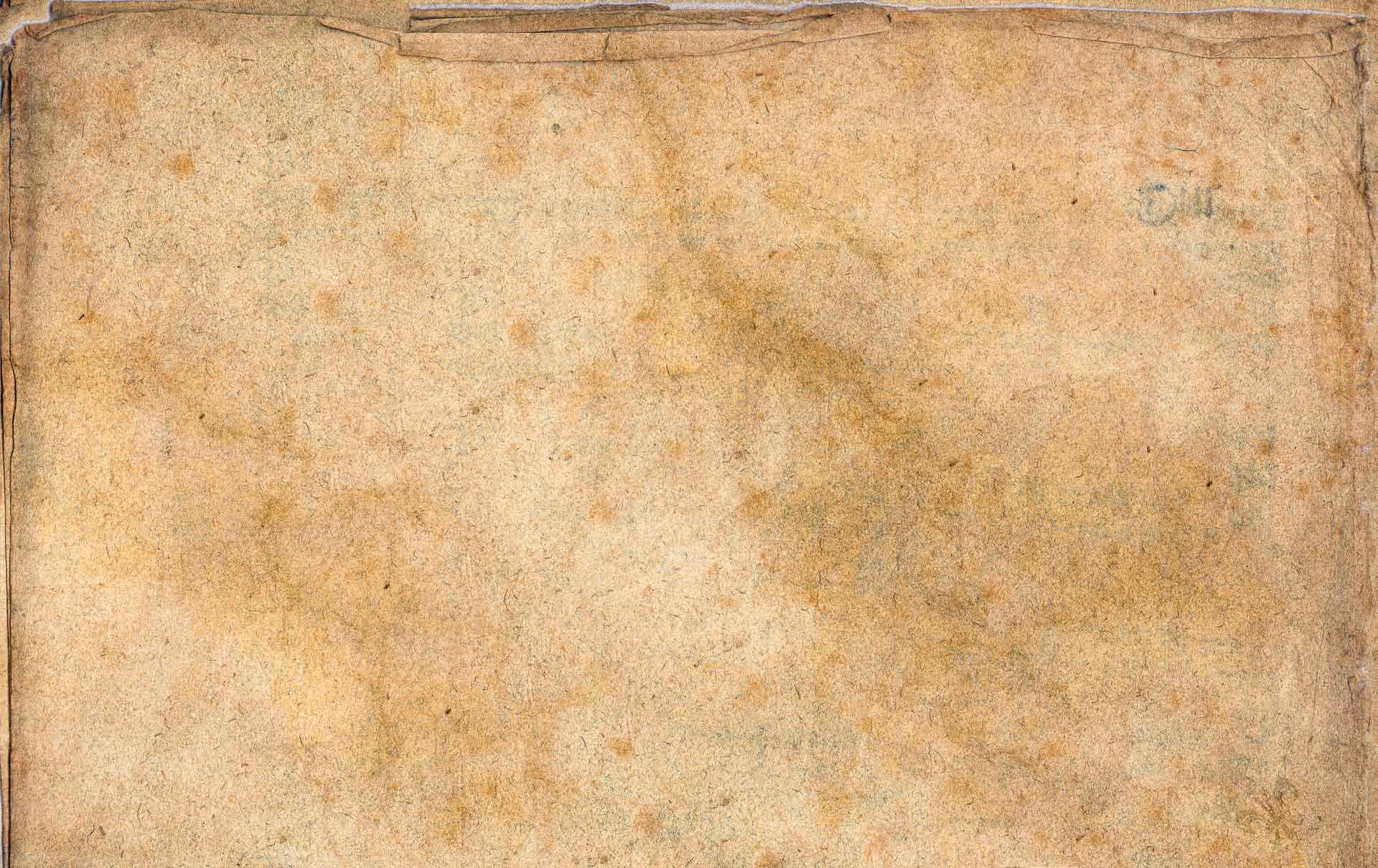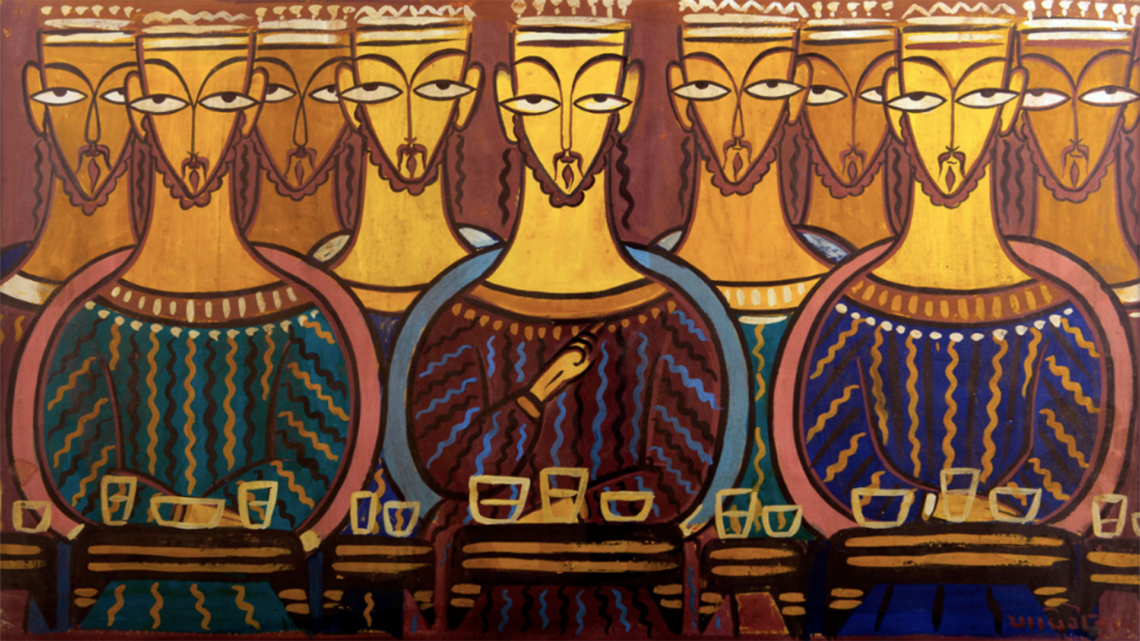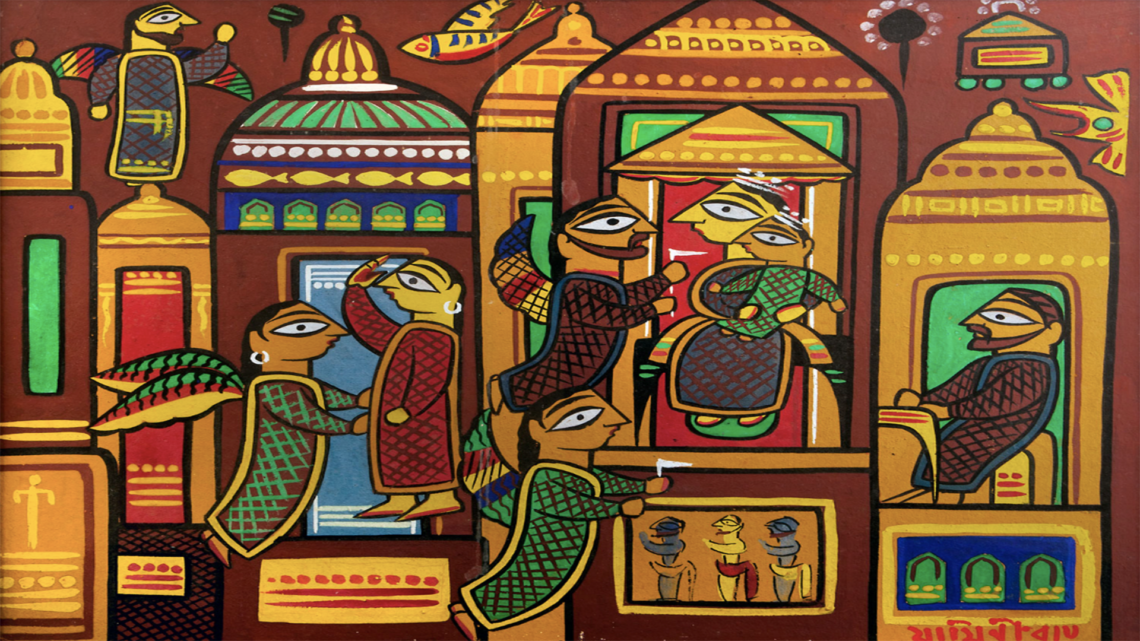

Dimensions: H: 38 cm, W: 66 cm; Medium: Tempera on board
Sweeping calligraphic lines, coloured with strong, natural Indian colours were a part of his own journey as an artist who originally trained under Abanindranath Tagore, the founder of the Bengal school of art where Roy studied the usual academic art tradition – painting in oils and drawing classical nudes – eventually graduating in 1908. Now against a backdrop of a growing Freedom movement, a young Jamini Roy began to question and push against European styles to develop a colloquial style largely inspired by Calcutta’s patuas or native painters. In addition, he chose to restrict his palette to his own rainbow of seven earthy, mineral Indian colours – Indian red, yellow ochre, cadmium green, vermillion, grey, blue and white. These were prepared from locally available material such as lead for red, arsenic for yellow, indigo for blue, arsenic and indigo for green, chalk, limestone for white, lamp black, charred paddy or coconut shell for black. Furthermore, cloth, wood, handmade paper and mat began to replace the traditional canvas.
In the 1920s, he began to focus on the theme of the Santhals, a large tribal group scattered across West Bengal, Jharkhand, Assam, Bihar and Odisha and began painting scenes of them engaged in daily life, their community and celebrations. All painted in the folk tradition. But it was in the 1940s at the height of his popularity that Roy really began to experiment with what some called his boldest theme – The Life of Christ – painted in now his signature Kalighat folk style and understood by the average Bengali. Most popular were his vivid renditions of The Last Supper, Christ with the Angels, Flight to Egypt, The Crucifixion, where the skin tone, the almond eyes, the flat imagery with its bold brushstrokes gave the images a local feel.
For us, we live in a very different India from that of the 1940s. The effects of open trade, radio, television and now the internet are seen in an increasing hybrid of Indian and Western culture. Three-day music festivals, the release of Hollywood movies on the same day as in the United States, an immediate understanding of who Ross and Rachel are, and so on.
However, you only have to look at Netflix and Amazon Prime to see that the demand for quintessentially Indian programming is extremely strong. ‘The Family Man’ next to ‘The Man with a Plan’, ‘Made in Heaven’ next to ‘Modern Love’.
Sometimes our English-speaking churches are so influenced by the artistic styles of the West – Bethel, Jesus Culture, Hillsong, Matt Redman. Or Warren, Keller, Driscoll, Chandler, Groeschels etc. In our heavily westernised urban India, these are acceptable, possibly even aspirational. However, like Jamini Roy back in the 40s and streaming services today, do we need to be more intentional about developing an Indian palette – a palette that allows, both the churched and seeker, like the Bengali babu mentioned earlier, to recognise themselves and the relevance of Christ to them more clearly?

Dimensions: H: 42 cm, W: 52 cm; Medium: Tempera on board
P Mehta
P Mehta, the writer, works with a museum in India.
Images courtesy the Museum of Art & Photography, Bengaluru
